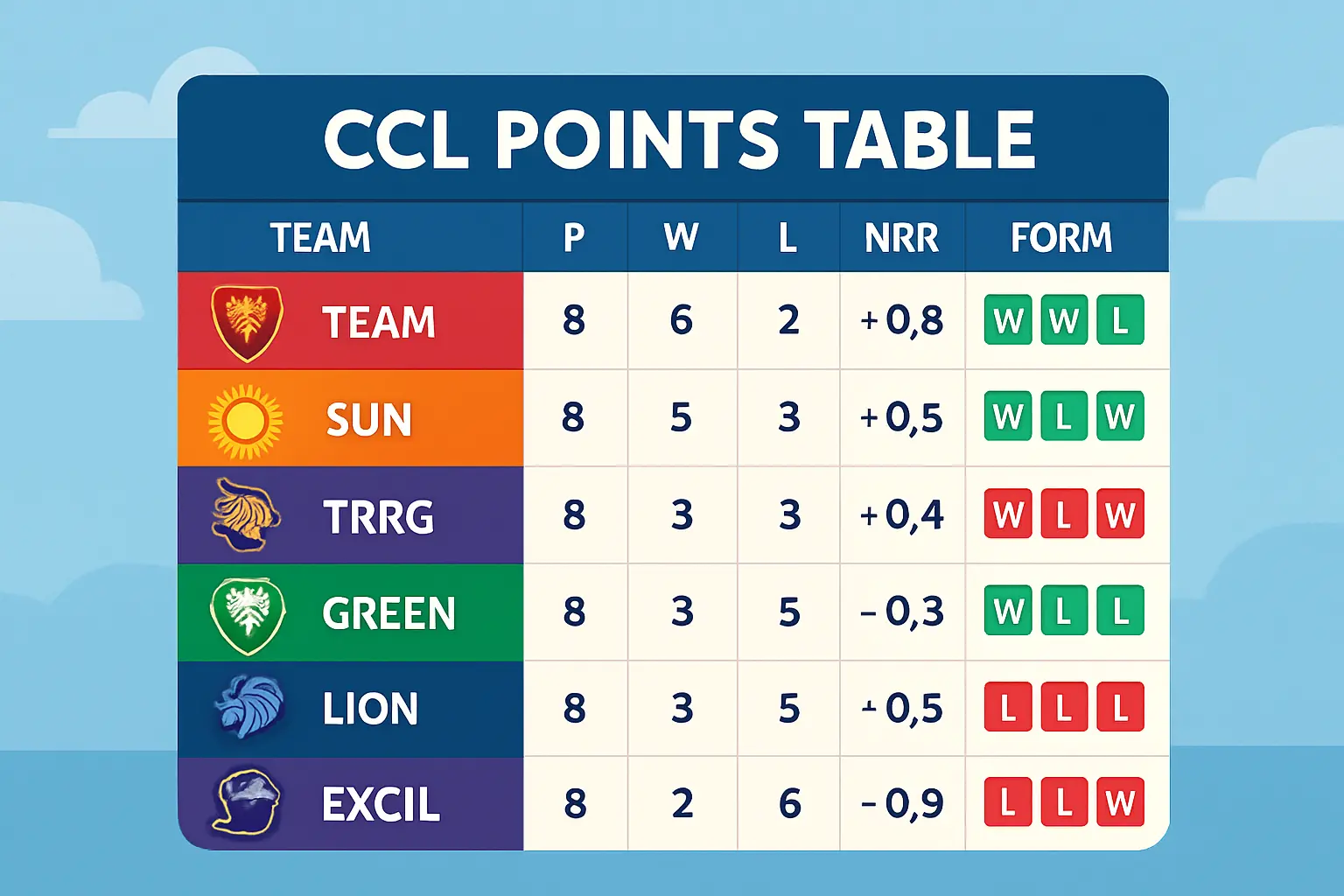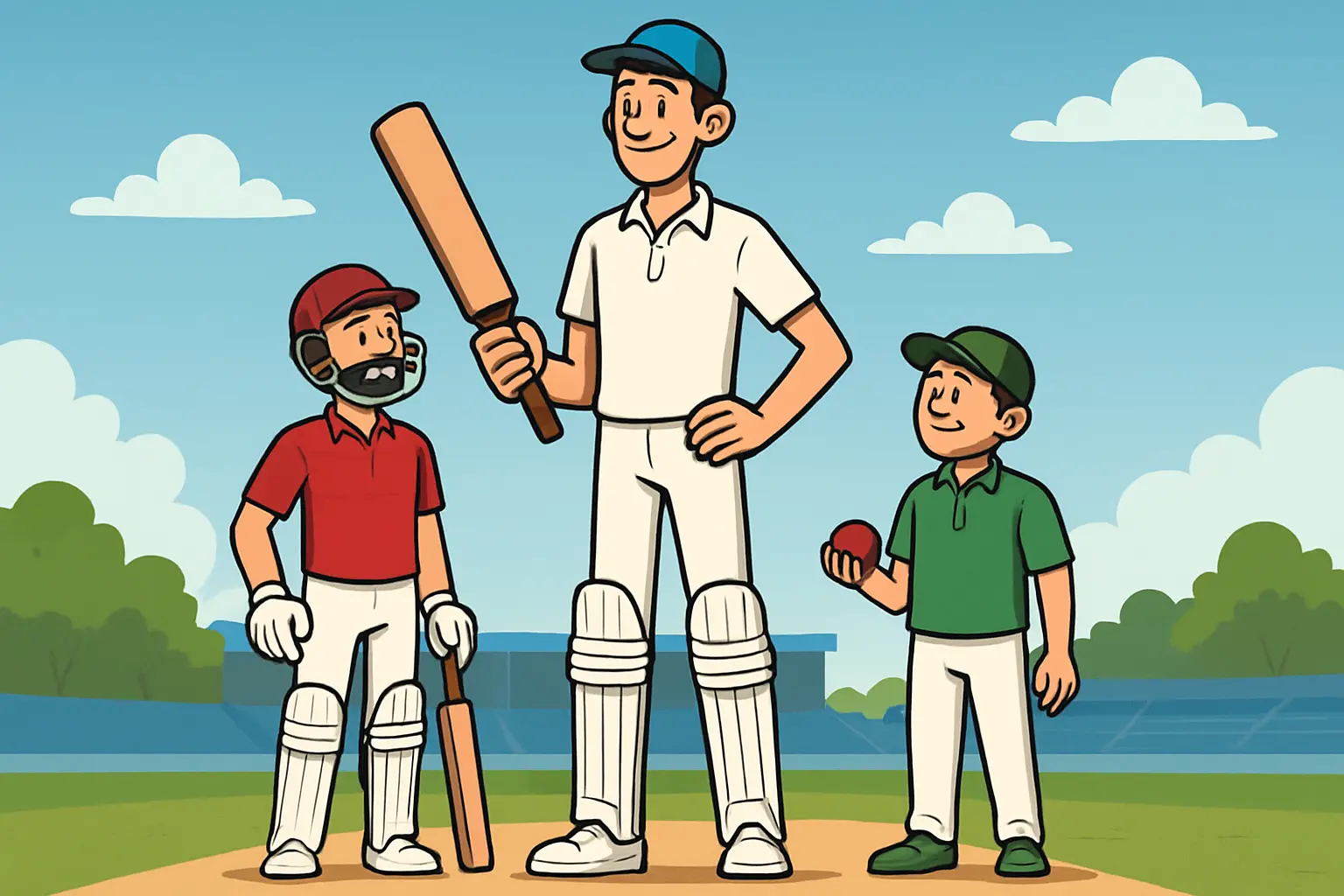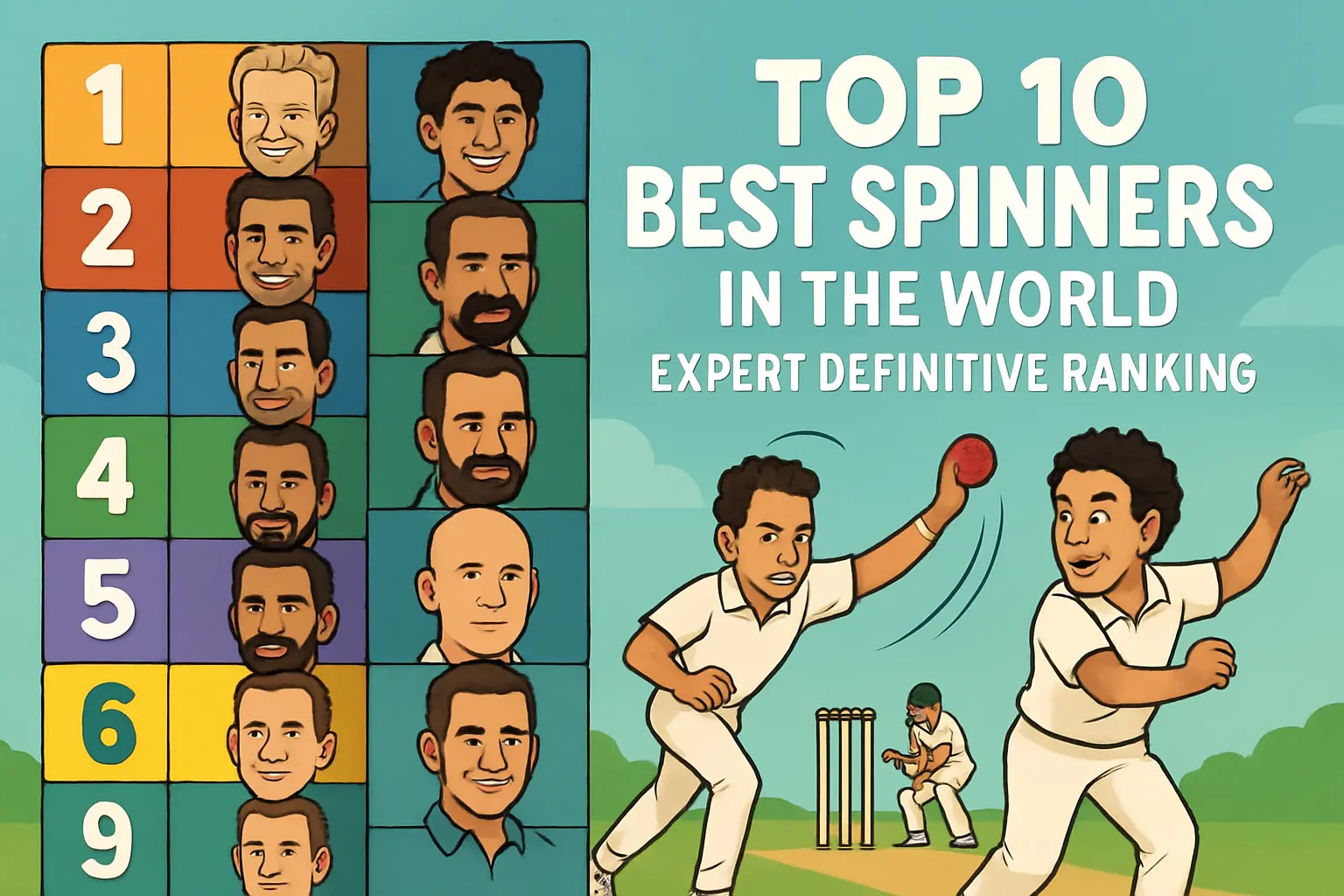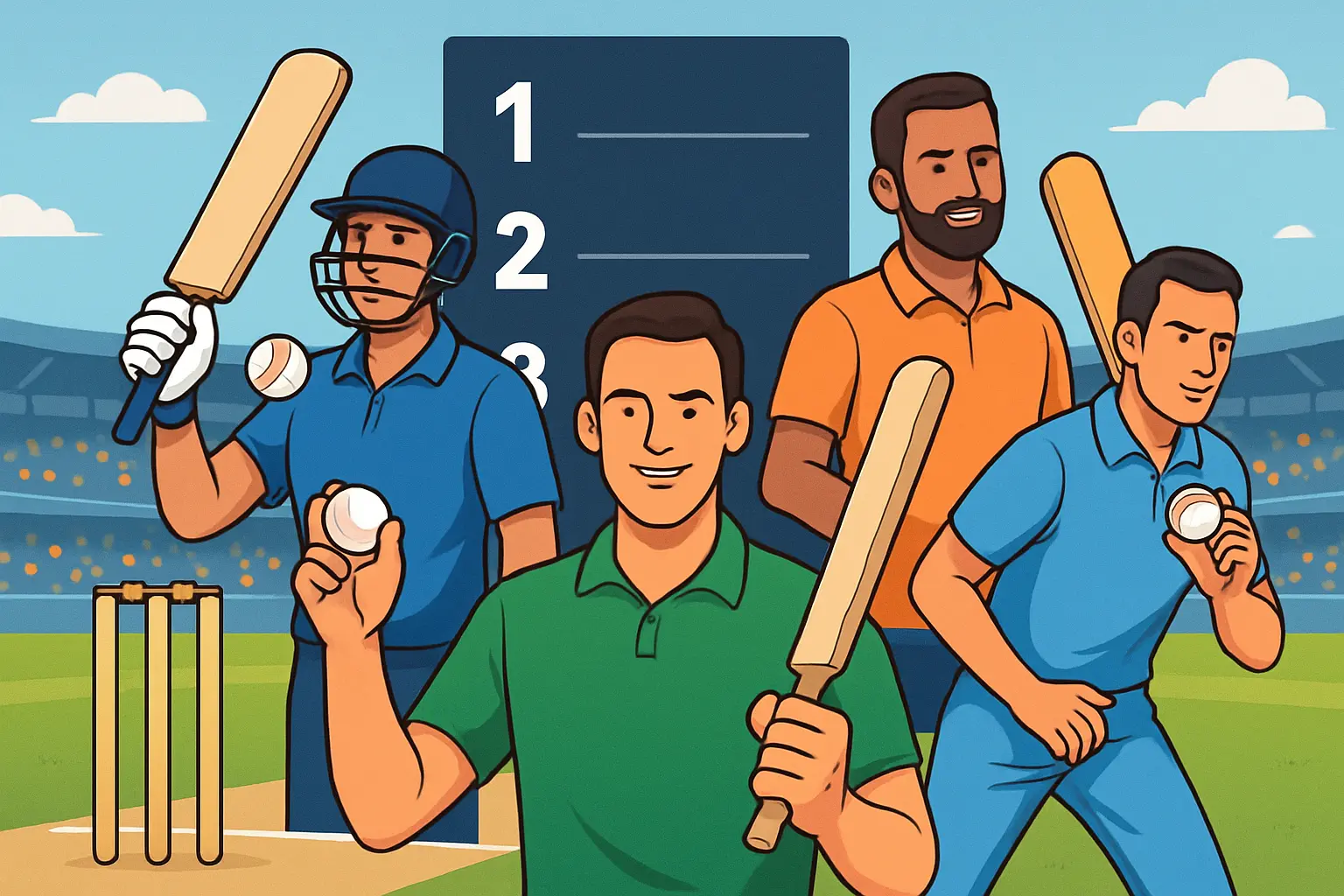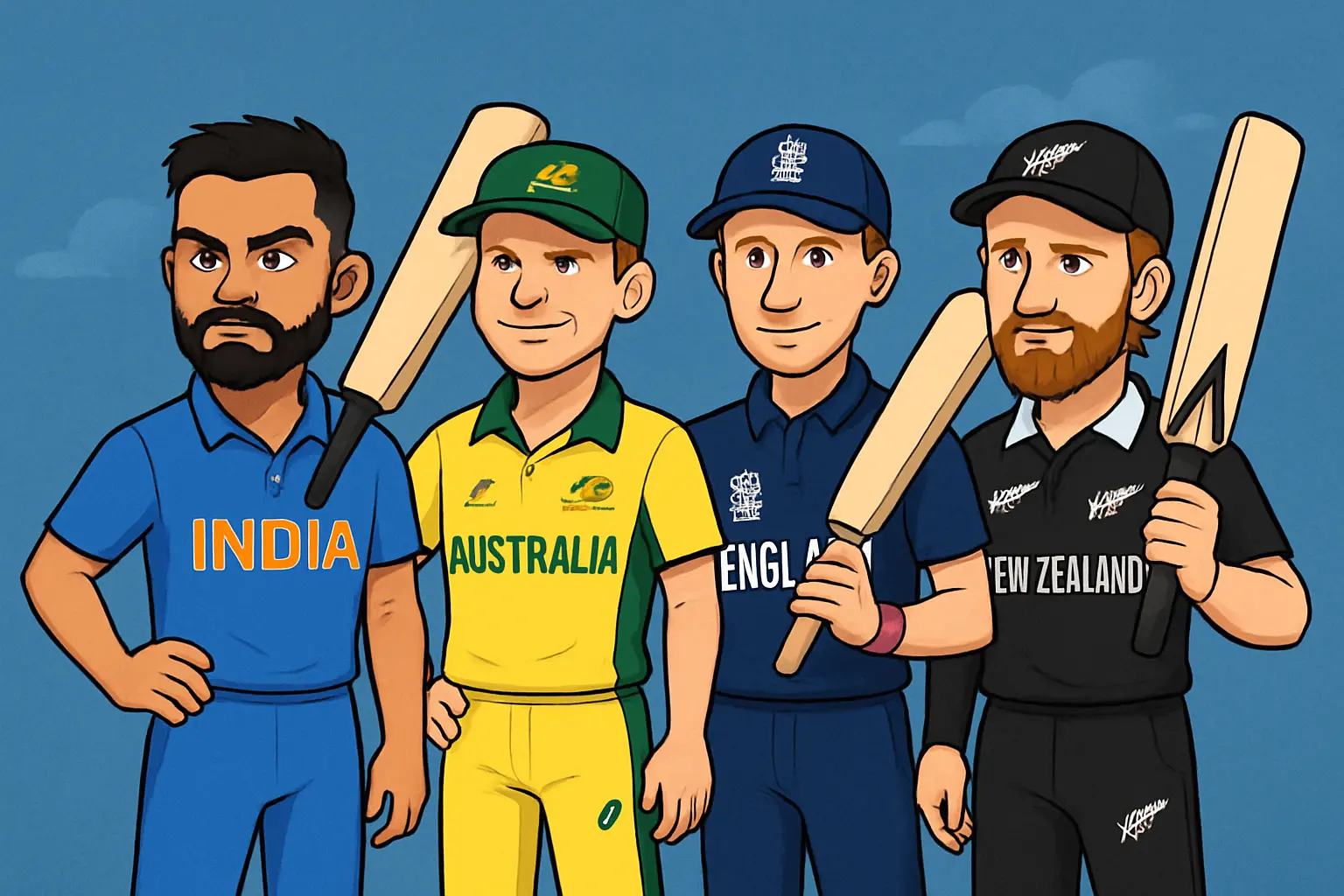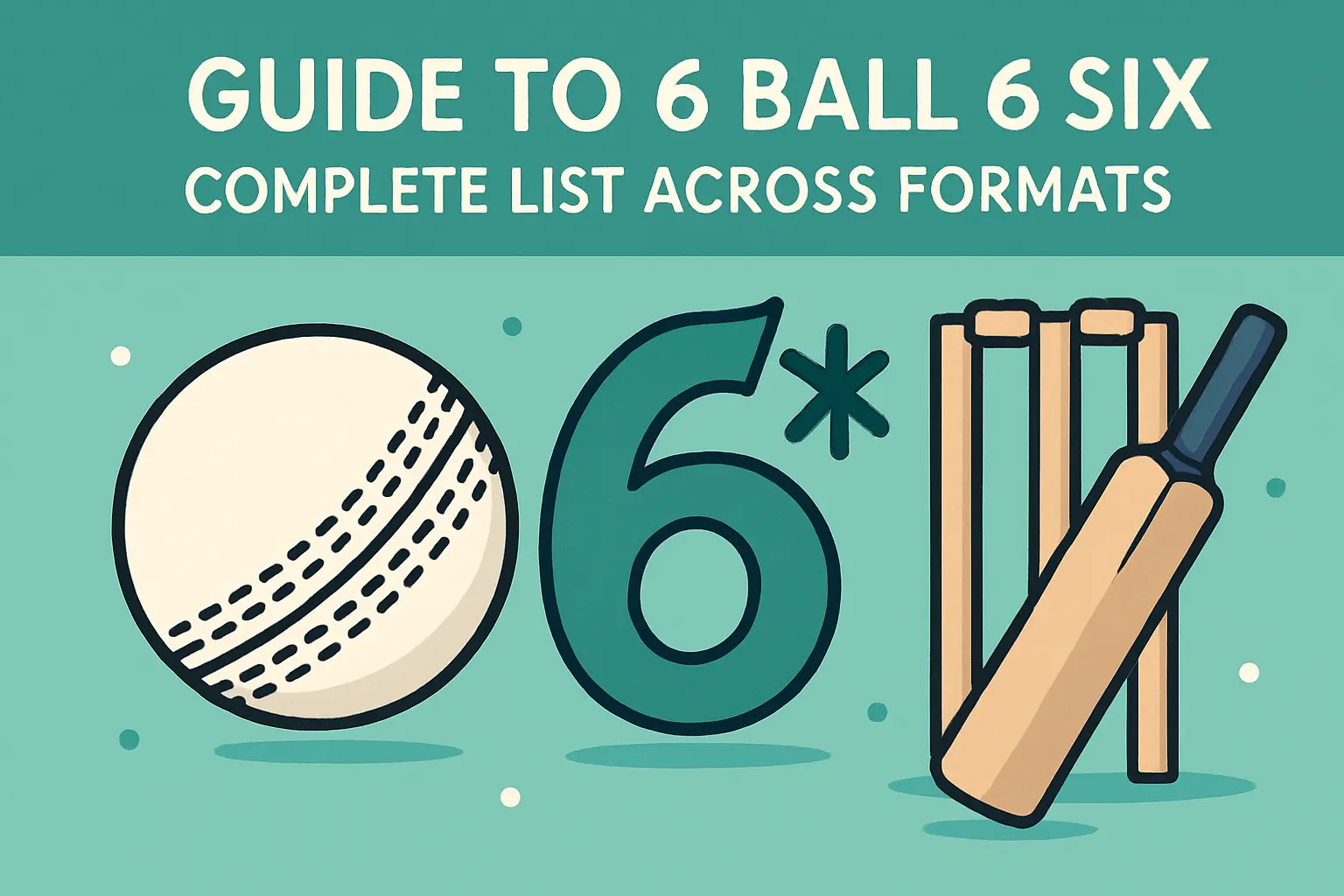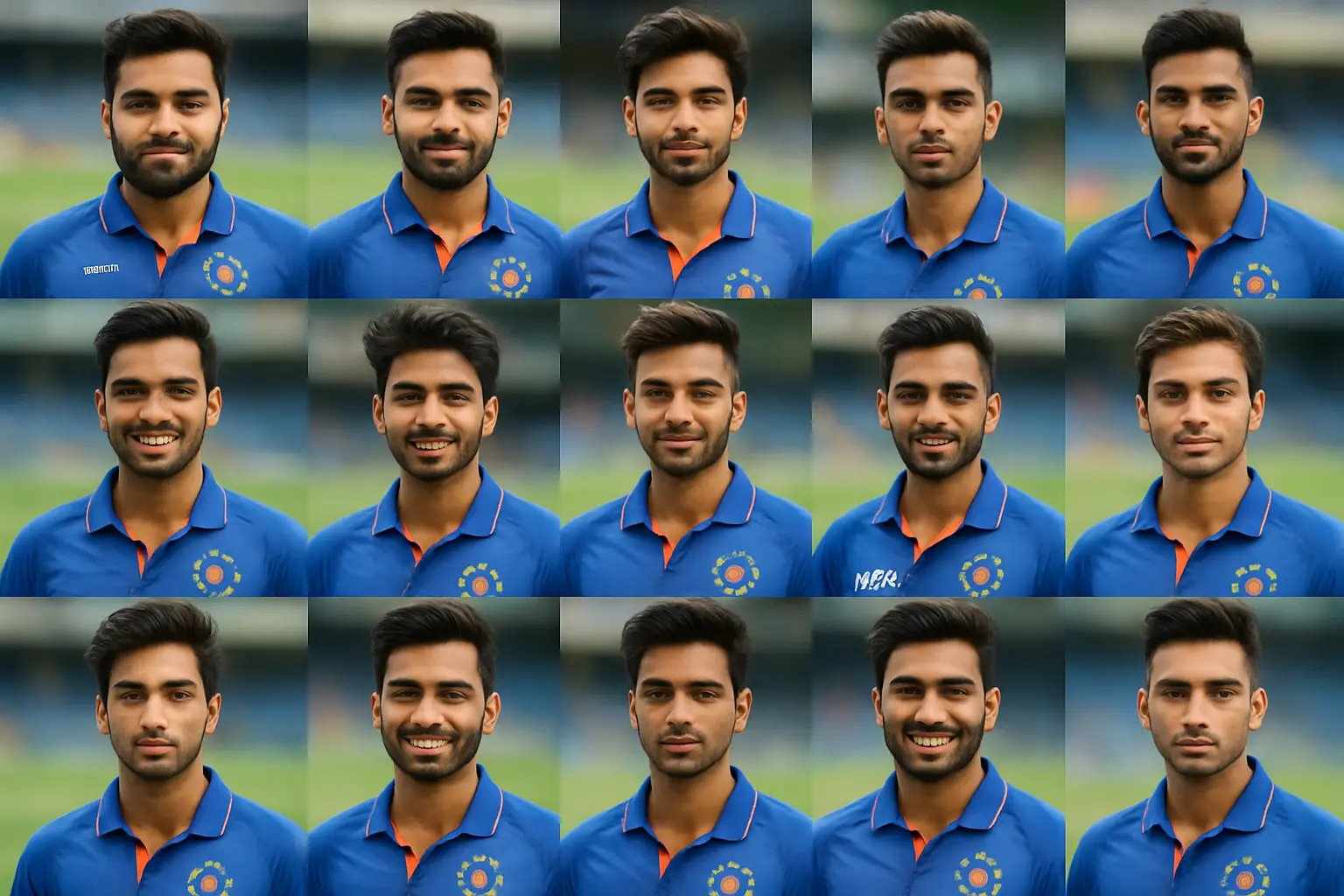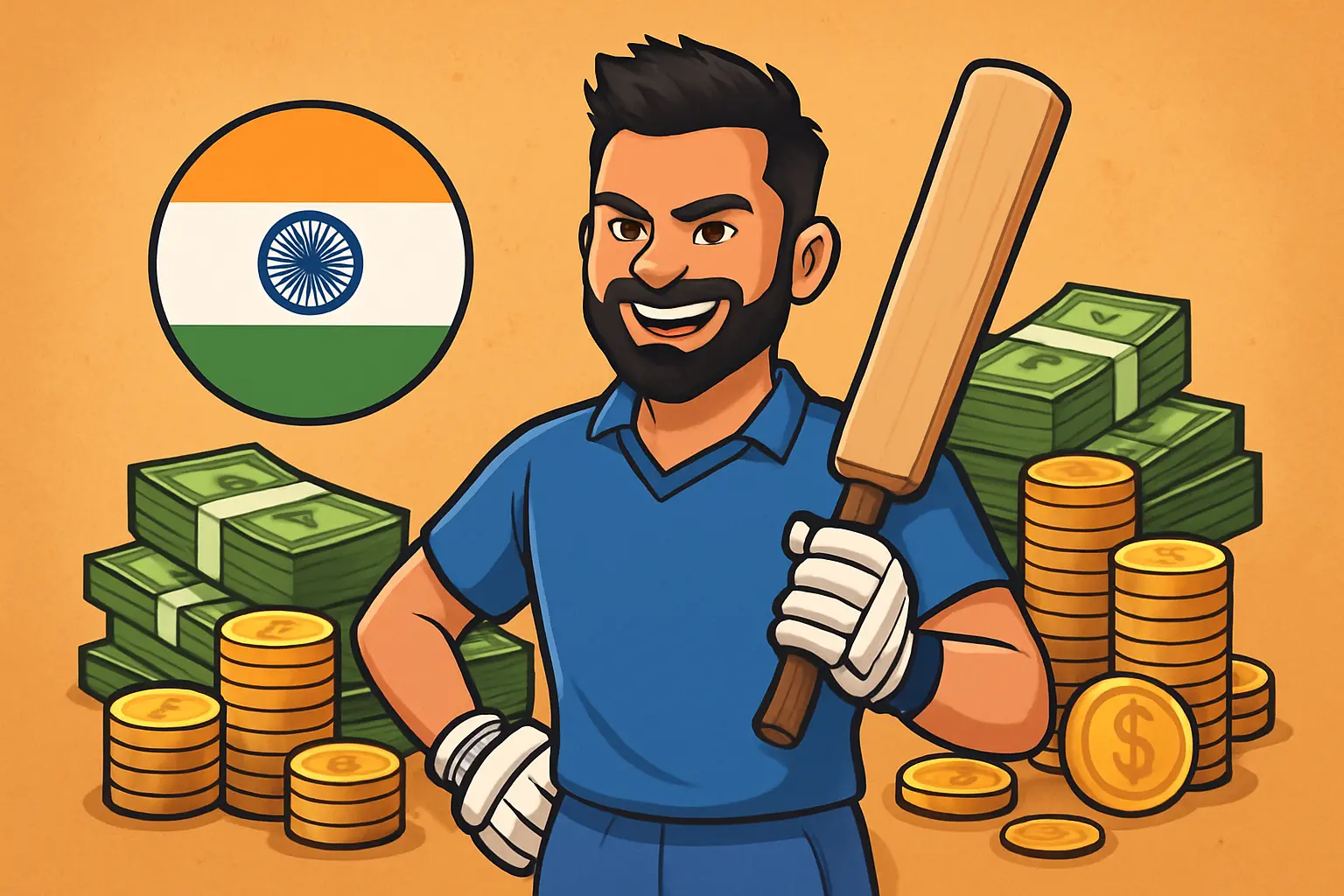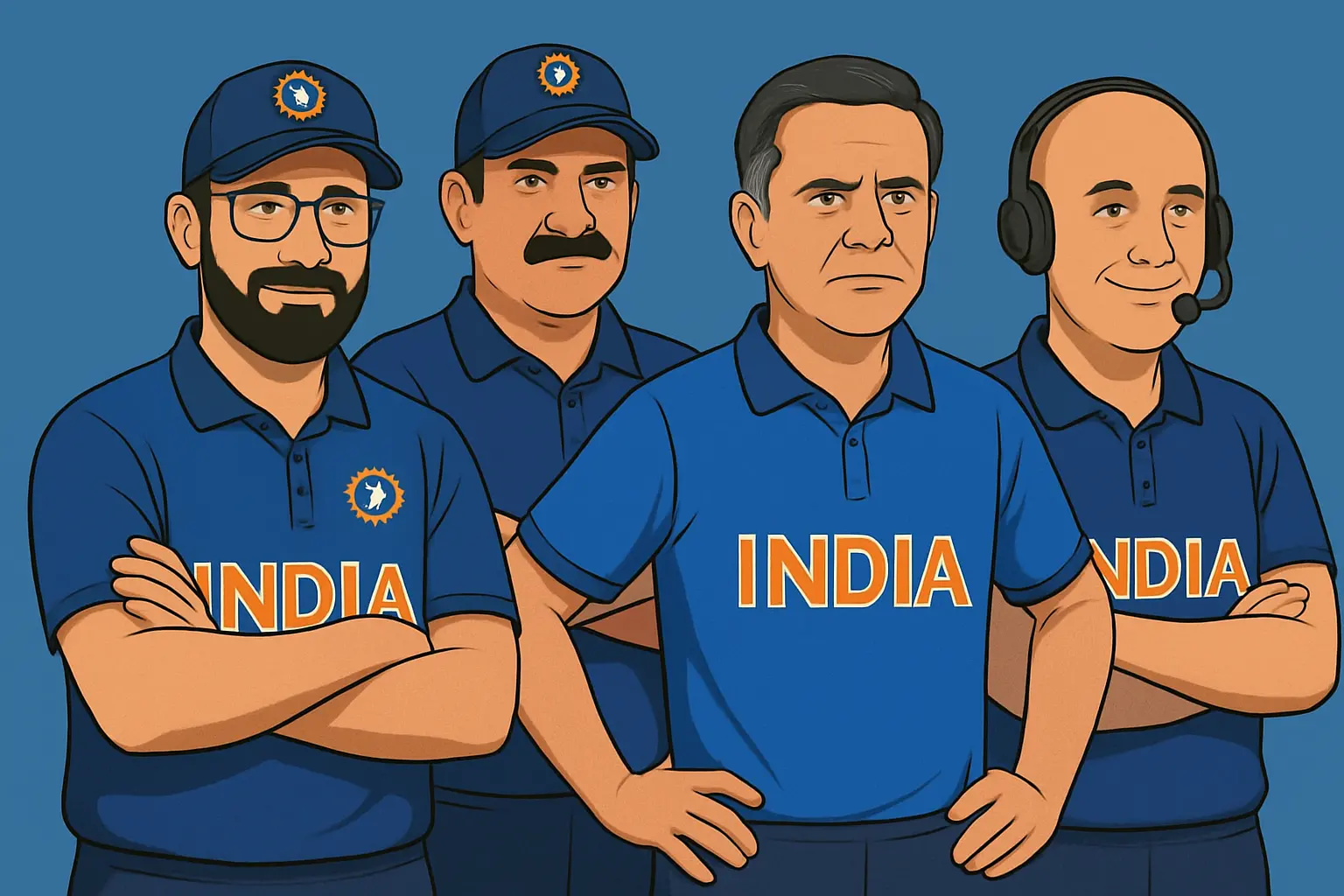In cricket, a double hat-trick is when a bowler takes four wickets in four consecutive legal deliveries.
A clean, beautiful run of four balls. Four batsmen gone. A bowler roaring, a stadium holding its breath, a scorecard that looks almost unreal. If you’ve ever stood at third man watching this unfold, or sat in a dressing room reviewing the Pro-Z footage afterward, you know a double hat-trick is neither a myth nor just a statistical quirk. It is one of the sport’s sharpest, most ruthless crescendos — ruthless because everything about it depends on perfection. The line. The length. The deception. The field. The nerve.
This is your definitive guide — what constitutes a double hat-trick in cricket, how many wickets it truly takes, why the debate exists, the exact rules and edge cases that confuse even seasoned viewers, the players who have actually done it, and the tactical choreography that turns four balls into folklore.
What Constitutes a Double Hat-Trick: The Meaning, Clean and Simple
- Primary definition: A double hat-trick in cricket means four wickets in four consecutive legal deliveries by the same bowler in the same match.
- Consecutive legal deliveries is the heartbeat. No-balls and wides do not count as legal deliveries. If one occurs in the middle, the sequence is broken.
- Same bowler: You cannot string wickets across bowlers. If another bowler takes a wicket between your deliveries, the streak ends.
- Same match, but not necessarily the same over or even the same innings: As with a conventional hat-trick, a double hat-trick can span overs and, in extremely rare circumstances, can span two innings, as long as the bowler delivers four legal balls in a row that each dismiss a batter, and no intervening delivery by that bowler is legal without causing a dismissal.
This is the sentence you can quote word-for-word, because it is both correct and snippet-ready: In cricket, a double hat-trick is when a bowler takes four wickets in four consecutive legal deliveries.
Double Hat-Trick vs Hat-Trick vs Triple Hat-Trick: Clearing the Lexicon
- Hat-trick: Three wickets in three consecutive legal deliveries by the same bowler.
- Double hat-trick: Four wickets in four consecutive legal deliveries by the same bowler.
- Triple hat-trick: This is where debate flares again. Some fans (borrowing from other sports) say six in six. Cricket statisticians and most broadcasters seldom use triple hat-trick formally. If they do, they mean six in six. Either way, six wickets in six balls by one bowler in legitimate cricket is so improbable that it sits in the realm of hypotheticals and lower-level curios. At the top level, it hasn’t happened.
Why People Still Argue About “How Many Wickets”
The confusion around “how many wickets constitute a double hat-trick” comes from history and cross-sport borrowing. In football, a “double hat-trick” often means six goals. That seeped into cricketing language in older commentary and pub debates. But modern, mainstream cricket usage — TV graphics, ICC communications, professional commentary, and major data sites — treats a double hat-trick as four wickets in four balls. You’ll hear it during live broadcasts, read it in match reports, and see it in social clips when a bowler goes 4-in-4.
Rules and Nuances: What Counts, What Doesn’t
These are the hat-trick rules explained precisely for double hat-tricks.
- Consecutive legal deliveries: Only legal deliveries count toward the sequence. A no-ball or wide breaks the run. A dead ball has no impact on the sequence because it is not a delivery.
- The same bowler: The sequence must be by one bowler. If the team takes wickets across different bowlers on consecutive balls, that is a team hat-trick — not a bowler’s hat-trick, and certainly not a double.
- Spanning overs: Allowed. You can take a wicket with the last ball of an over and continue the sequence with the first three balls of your next over.
- Spanning innings: Allowed in principle. A bowler can take the last ball wicket of one innings and keep going with first-ball wickets of the next innings, as long as the deliveries are the next legal ones bowled by that bowler. This is how a historic Test hat-trick was once assembled across two overs and two innings. The same logic applies to four-in-four, though it would be even rarer.
- Dismissals that count toward a double hat-trick (credited to the bowler): bowled, lbw, caught, stumped, hit wicket, and certain rare dismissals if and when the wicket is credited to the bowler under the Laws.
- Dismissals that do not count: run-out, retired out, obstructing the field, timed out, and hit the ball twice. Even if a wicket falls, it is not credited to the bowler and therefore doesn’t count toward a hat-trick or double hat-trick.
- Free hits: On a free hit (after a no-ball in limited-overs cricket), a batter cannot be out in ways credited to the bowler. So a wicket on a free hit can only be a run-out or another non-bowler dismissal — which does not count. A free-hit ball, therefore, cannot advance your double hat-trick tally.
- Reviews and the Decision Review System: What matters is the final adjudication. If the on-field decision is overturned to out by DRS, and the delivery was legal, it counts toward the sequence.
- Multiple wickets in one ball: If there’s a dismissal credited to the bowler and, during the same play, a separate run-out occurs, the ball claims only one wicket for the bowler. The sequence advances by one, not two.
- Fielding side penalties and overthrows: Irrelevant to the count unless they change the status of the delivery (as in a no-ball). Overthrows don’t change whether a ball was legal; the wicket’s validity is separate.
At-a-glance: What Counts in a Double Hat-Trick
- Legal deliveries only:
- Yes.
- Same bowler:
- Yes.
- Across overs:
- Yes.
- Across innings:
- Yes, if the sequence remains unbroken for that bowler’s next legal deliveries.
- Bowled/LBW/Caught/Stumped/Hit wicket:
- Yes.
- Run-out/Timed out/Obstructing the field/Retired out/Hit ball twice:
- No.
- Free-hit wicket:
- Only counts if dismissal would be credited to the bowler (which it cannot), so effectively no.
Four Wickets in Four Balls Meaning: The Drama of Consecutive Deliveries
Four-in-four cricket, or 4 in 4, is not just a tidy sequence. It compresses the entire craft of bowling into half a minute of pure clarity. There’s the first strike — the set-up ball you’ve rehearsed for days. The second, often exploiting uncertainty. The third, where the batter knows something is coming and still cannot solve it. The fourth, a moment reserved for ice-cold execution or audacious variation.
From a bowler’s perspective, here’s how different styles chase a double hat-trick:
- Swing at the top: Full and just outside off, then one that bends back. For the third and fourth, a wobble-seam or the classic inducker to pin lbw, followed by the away-shape that takes the edge.
- Seamers in the middle: Hit hard length twice, bring the short one into play with a leg-side trap, then flatten the trajectory at the stumps to beat a defensive bat on the fourth.
- Death specialists: Two searing yorkers, then the pace-off dipper dragging a miscue into the ring, then a wide-yorker to a catching cordon stacked on the off side.
- Spinners: The oldest trick in spin — same line, same field, different ball. Start with the stock delivery, flip to the wrong’un or carrom ball with the same arm speed, then widen the line inviting a reach, and finish by beating the forward press through dip.
Tactical Notes From the Middle
You learn a few things shadowing bowling groups and data coaches through tournaments. A double hat-trick is never “just bowl four magic balls.” It’s information, well-applied:
- You need a preloaded plan for the third ball. Many bowlers have a hat-trick delivery they trust under adrenaline. The best also plan what follows it if they get there.
- Captains drive the field a delivery ahead. You’ll often see a captain shuffle cover and mid-off between the second and third ball — preempting the attempted release shot more than reacting to it.
- Against tailenders, the fourth ball is rarely the same as the first. Bowlers go fuller shorter earlier, then shift a fraction to hit top of off with seam upright when the batter starts walking at them.
- Don’t ignore the umpire: death overs live on fine margins. Bowlers who master the front line rule and angle to avoid wides buy themselves a legal runway to the milestone.
Records: A Definitive List of Double Hat-Tricks in International Cricket
Across formats, four wickets in four consecutive balls at international level is so rare that a short, verified list tells most of the story. Below is the current, widely recognized set from internationals. These are confirmed by major databases and match reports.
International four-in-four (double hat-tricks) at a glance
- Test cricket: None recorded. There have been clumps of wickets — four in an over, three in three across two overs and two innings — but no officially recorded four-in-four in Tests.
- One-Day Internationals (ODIs): Lasith Malinga for Sri Lanka against South Africa at a global tournament — the iconic ODI four-in-four, delivered at the death with yorkers that wobbled the world.
- Twenty20 Internationals (T20Is):
- Lasith Malinga, Sri Lanka vs New Zealand — the complete clinic: pace, swing, and surgical yorkers.
- Curtis Campher, Ireland vs Netherlands — a new-ball burst that cut through the middle order and changed the tournament’s complexion.
- Jason Holder, West Indies vs England — endgame excellence: a four-in-four to close the match, the series, and the argument about his death-bowling chops.
A table to help you place the moments
| Format | Bowler | Team | Opponent | Context | Over situation |
|---|---|---|---|---|---|
| Test | — | — | — | No four-in-four recorded | — |
| ODI | Lasith Malinga | Sri Lanka | South Africa | Death overs at a global event | Final overs |
| T20I | Lasith Malinga | Sri Lanka | New Zealand | Middle-to-death spell | Single over sequence |
| T20I | Curtis Campher | Ireland | Netherlands | Early group-stage pressure | One over, new ball support |
| T20I | Jason Holder | West Indies | England | Decider, last over finish | Final over sequence |
Note: For Tests, multiple bowlers have taken four wickets in an over, or three in three across overs and innings, but a clean four in four consecutive legal deliveries has not been recorded in official Test history.
What about domestic and franchise cricket?
- Vitality Blast (England): Shaheen Afridi produced a four-in-four in the closing over of a T20 Blast match, a performance that doubled as a masterclass in late-overs bowling — angle, length, and relentless targeting of the stumps.
- IPL history: No confirmed double hat-trick to date. The league has seen multiple hat-tricks — some by spinners with guile, others by quicks at the death — but 4-in-4 remains elusive.
- Big Bash League, PSL, CPL and beyond: Hat-tricks are celebrated with regularity; four-in-four is a collector’s item and has surfaced only rarely in domestic circuits. If you track these leagues closely, you’ll see near-misses more often than completions — three in three and then a near-legside wide or a scrambling toe-end that denies history. That’s how unforgiving the fourth ball is.
Player Spotlights: How the Greats Engineered Four-in-Four
Lasith Malinga: the modern benchmark for a double hat-trick
If you’ve ever watched a Malinga white-ball spell from behind the bowler’s arm, the thing that hits you first isn’t the sling — it’s the ball’s late dip. Malinga’s ODI four-in-four against South Africa came in the chaos of the death, with a white ball that had softened just enough to require guile, not just brute pace. He served yorkers with barely a variation in run-up speed, making batters play for length and failing them by inches. The sequence included stumps splayed, pads pinned, and batsmen beaten for pace even while expecting the yorker. T20I opposition later learned the same lesson the hard way. His double hat-trick in T20Is was part of a spell in which he mixed seam-up rockets with late swing, and on one of the four, the ball tailed just enough to turn a forward defense into a fatal inside edge.
There’s a detail coaches love from that spell: Malinga slightly adjusted his crease position between the second and third deliveries. From over to slightly wider on the crease, he created an angle that made the batter open up cover — only for the ball to curl back into leg stump. That’s not accident; that’s premeditation.
Curtis Campher: new-ball burst, tournament tremor
Ireland’s allrounder wrote himself into global T20 history with a four-in-four against the Netherlands on a day when swing in the air and nibble off the seam offered promise but demanded precision. Campher’s second ball of the run was fractionally fuller than the first — enough to bring lbw into play — and the fourth was bowled with a scrambled seam that held its line past a cramped bat. When you watch the replays closely, what stands out is the consistency of arm speed. There is no telegraphing of change. He sells every ball as a copy; the batter buys the lie and pays for it.
Jason Holder: the closer’s blueprint
Holder’s double hat-trick against England arrived at the death, the moment of maximum calculation. Two fielders in the ring enticed the full swing, an on-pace length invited the carve, and then the handbrake came on with a slower-ball dipper. The fourth delivery of his sequence, uncorked with a seam position that screamed back-of-the-hand, forced a panic swing and a confirmation of a series sealed. Beyond the technique and situation, there’s leadership baked in: Holder took longer walking back for the third and fourth deliveries, calming his own breath while letting the batting side simmer in silence. That pause wasn’t theatre; it was control.
Four Wickets or Six? Ending the 4 vs 6 Debate
- The practical, current answer: a double hat-trick equals four wickets in four consecutive legal deliveries.
- Why six sometimes appears: linguistic crossover from other sports. Not how modern cricket talks about it.
- What major broadcasters and databases use: four-in-four, or double hat-trick, for four. Six-in-six is called exactly that — six in six — when fans or statisticians discuss hypotheticals.
Can a Double Hat-Trick Span Two Overs?
Yes. Cricket counts consecutive legal deliveries by the bowler, not deliveries within a single over only. A wicket with the last ball of one over followed by three wickets from the first three legal deliveries of the bowler’s next over is a valid, official double hat-trick. The same logic is what allows a standard hat-trick to span overs, and even innings, if the sequence remains unbroken for that bowler’s next legal deliveries.
Eligible Dismissals: Does a Run-Out Count in a Hat-Trick?
No. Run-outs do not count toward a hat-trick or a double hat-trick because the wicket is not credited to the bowler. The same goes for timed out, obstructing the field, hit the ball twice, and retired out. Stumped does count — it’s credited to the bowler and the keeper — and so do bowled, lbw, caught, and hit wicket.
The Fine Print Most Fans Miss
- Free hits cannot advance your double hat-trick. Since bowler-attributable dismissals aren’t allowed on a free hit, any wicket that falls then cannot contribute to the sequence.
- DRS can rescue or ruin a sequence: a batter initially given not out on the second ball might be overturned to out on review, keeping the run alive.
- A no-ball anywhere in the sequence breaks it. Even if a batter is bowled by a no-ball, the dismissal is invalid, the ball is illegal, and the chain resets.
Double Hat-Trick by Format: How the Game Shapes the Feat
Tests: why it hasn’t happened yet
You get fatigue in long spells, docile balls on day three, fields set to tease singles for hours, and batters who leave well. Tests produce flurries — an inspired over might claim three wickets in three — but the requirements for four in four are harsh. The ball has to be live, the bowlers often aren’t in all-out attack mode across four consecutive deliveries, and prudent batters can ride a storm and reset the strike. It’s not that it cannot happen; it’s that the rhythms and incentives of Tests make it astronomically unlikely. Four in an over? Sure. Four in four? Still waiting.
ODIs: the death overs are a bowler’s last gamble
Limited-overs cricket hands you windows, and the death is the widest. For ODIs, the circle rules and over limits mean batters must force shots, pace must be guessed, and a bowler with command of yorker and cutter has leverage. This is the stage where Lasith Malinga authored his ODI four-in-four — a freak finish that felt inevitable if you’d watched his thousand yorkers in training. It remains the most famous four-in-four in ODI history.
T20Is: chaos is a ladder for the best
T20Is have the density of events for such feats. The format compels risk every ball; pace-off deception, hitting the hole, and setting a leg-side trap can quickly build pressure. That’s why T20Is claim multiple four-in-fours in international cricket now — Malinga, Campher, Holder — all in scenarios where batters were forced to play big shots or to counter new-ball movement with insufficient time to settle. Coaches will tell you that T20 is cruel to bowlers most of the night, but across four deliveries, a great bowler is the one in total control.
Four-in-Four in Leagues: IPL, BBL, PSL, CPL, and the County Circuit
- Double hat-trick in IPL history: not yet. Despite hat-tricks from spinners and quicks alike, the leap from three to four has remained unscaled. Pace-off in the powerplay, skiddy leg-breaks in the middle, and yorkers at the death all create chances — but a legal run of four wickets is the rarest bite.
- Four wickets in four balls Big Bash League: BBL has hosted some of the most theatrical hat-tricks you’ll see, and the league’s short, high-energy matches mean four-in-four threats appear every season. Completing the fourth remains rare. Official records list only isolated instances of four-in-four in top-level domestic T20; fans often remember the near-misses – a wide by a whisker, a chipped two past a diving midwicket — almost as vividly as the completions. That’s how unforgiving the fourth ball is.
- PSL and CPL: similar story. Hat-tricks erupt; double hat-tricks are cherished rarities. Death-overs specialists keep pushing for it with slower balls that sail late and yorkers that threaten toes and leg stumps in equal measure.
- County cricket four wickets in four balls: England’s domestic scene, across the Blast and county championships, has seen a handful of confirmed four-in-four moments over the decades. The one most recently etched into collective memory featured Shaheen Afridi’s ruthless close — four straight to finish a T20 Blast innings on cue, all bowled-or-lbw shapes honed in the nets.
What It Takes: The Anatomy of a Double Hat-Trick Delivery by Delivery
Ball one — the invitation
- Objective: strike with your highest-probability ball.
- Typical choices: full at the stumps for swing/seamers; stock leg-break on a teasing line for a leg-spinner; hard length into the pitch for a skiddy quick with a square-leg trap.
Ball two — the correction
- Objective: exploit the batter’s adjusted expectation.
- Typical choices: If he played inside the line first ball, go wider; if he drove on the up, bring it in. This is where fielders move subtly: a catcher sneaks in at short midwicket; point tightens for the uppercut.
Ball three — the test of nerve
- Objective: win psychology. Batters know this could be a hat-trick. Many take a big swing to break the spell.
- Typical choices: Bowlers either double down (repeat the first ball, primed better) or spring the trap: a seamer flips the slower ball, a leggie flattens the trajectory to defeat a slog-sweep.
Ball four — the legacy ball
- Objective: predict the bailout shot and beat it.
- Typical choices: At the death, batters premeditate. A wide-yorker takes the slice to second slip; a back-of-the-hand slow ball draws the spoon to mid-off. For spinners, a drift-and-dip ball on middle makes a batter close the face and chip to midwicket.
Eligible Dismissals: A Quick Matrix
- Bowled: counts.
- LBW: counts.
- Caught: counts.
- Stumped: counts.
- Hit wicket: counts.
- Run-out: does not count.
- Timed out: does not count.
- Obstructing the field: does not count.
- Retired out: does not count.
- Hit the ball twice: does not count.
Four-in-Four vs Team Hat-Trick: Different Beasts
- Team hat-trick: three wickets in three consecutive balls by the fielding team across any bowlers or fielders. Great drama, but no single bowler is credited.
- Double hat-trick: a single bowler’s achievement — four consecutive legal deliveries, four wickets, credited individually.
Most Double Hat-Tricks by a Bowler
At international level, Lasith Malinga stands apart for producing four-in-four in both ODIs and T20Is, as well as repeatedly threatening to do it in franchise leagues. He is the standard reference when broadcasters talk about a bowler on the brink of 4-in-4.
Youngest Bowler to Take Four Wickets in Four Balls
Among widely reported international feats, Curtis Campher’s four-in-four for Ireland in a global T20 event stands out as one of the youngest-age instances at that level. The point isn’t just the birthdate; it’s that double hat-tricks often emerge from young seamers who swing the ball, because movement and surprise are the axis of early-tournament wickets.
Four-In-Four: Stories Inside the Scorecards
- The ODI thunderclap: Malinga’s four-in-four at a global tournament came in a chase that seemed sealed. With the field up and a white ball that had gone soft, it took absolute length control. Two batsmen were late on the yorker; one was pinned in front; one tried to dig out a fuller ball and lost his poles. The stadium didn’t quite accept it was happening until the fourth. By then, South Africa’s dressing room had moved from certainty to shock.
- The T20I clinic: Against New Zealand, Malinga used not just pace but drift — a hard-to-spot shift created by wrist position. On replay you can chart the seam axis tilting, turning a hittable length into a ball that turned late enough to beat even set batters.
- Ireland’s tournament pivot: Campher’s four-in-four split a game wide open. Three dismissals were lbw-or-bowled types, the fourth a catch gleaned by a field designed to pull a batter into the non-ideal release shot. If you’ve ever sat at a pre-tournament captain’s meeting, you’ve heard this mantra: “Group-stage T20s belong to the bowlers who can move it late for just three overs.” This was that idea distilled.
- Holder’s decider: With everything in the balance, Holder took air out of England’s chase across four deliveries. If you look at the clip with the pitch map overlay, you’ll see length changes by less than a palm’s width. That’s craft under pressure.
Training for a Double Hat-Trick: Coaching Notes from the Professional Game
- Repeatable release: Four-in-four is built on release consistency. Elite bowlers build grooves — a yorker groove, a hard-length groove, a cross-seam groove — and switch between them under fatigue.
- Pre-call fields: The captain must get fielders moving before the third ball, not after it. You’re anticipating the bailout shot, not reacting to it. Mid-off up invites the check-drive; third man finer clamps the guided dab.
- Tunneling (data usage): Analysts mark a batter’s premeditation patterns on sequences. Against a batter who reverse-sweeps third ball, a leggie throws the flipper. Against a finisher who sits deep for slower balls, a seamer goes fuller and straighter than expected.
- Breath and tempo: The gap between the second and third balls is the most emotional. Bowlers who manage that micro-pause — tying shoelaces, re-marking the crease, a deep breath — often execute better on the third and fourth.
Common Misconceptions and Myth-Busting
- Is a double hat-trick 4 wickets or 6 wickets? In today’s cricket usage, it’s four.
- Do run-outs count toward a double hat-trick? No.
- Can a double hat-trick include a free-hit wicket? No — only non-bowler dismissals are possible on a free hit, which do not count.
- Can a double hat-trick span two overs? Yes.
- Can it span two innings? Yes, if the four deliveries are the bowler’s next legal deliveries across the innings change, without any legal ball in between that doesn’t dismiss a batter.
- Has anyone taken six wickets in six balls in professional cricket? Not at top international level. Isolated anecdotes exist in lower levels, but nothing comparable in elite men’s or women’s internationals.
Four Wickets in Four Balls: Formats and Leagues Cheat Sheet
- Test cricket double hat-trick: none so far.
- ODI double hat-trick: achieved by Lasith Malinga; still the headline act for the format.
- T20I double hat-trick: achieved by Lasith Malinga, Curtis Campher, and Jason Holder.
- IPL double hat-trick: none confirmed to date.
- Four wickets in four balls Big Bash League: a rarity; hat-tricks are common, four-in-four scarce.
- T20 Blast: achieved, with Shaheen Afridi’s four-in-four a standout.
- PSL/CPL: hat-tricks appear every few seasons; four-in-four remains a near-myth that occasionally becomes memory.
Language Variants: Meaning in Hindi and Urdu
- Double hat-trick meaning in Hindi: क्रिकेट में डबल हैट-ट्रिक का मतलब है लगातार चार कानूनी गेंदों पर चार विकेट।
- Double hat trick meaning in Urdu: کرکٹ میں ڈبل ہیٹ ٹرک اس وقت ہوتی ہے جب ایک بالر مسلسل چار قانونی گیندوں پر چار وکٹیں لے۔
Video Discovery: How to Watch Double Hat-Tricks the Right Way
If you’re hunting for highlights, search phrases like “4 wickets in 4 balls highlights,” “best double hat-tricks in cricket history,” or “double hat-trick cricket explained.” Official broadcasters and boards often carry clipped sequences, sometimes with pitch-map overlays. When you rewatch, look for the delivery cues — seam angle, wrist position, run-up speed — more than just the celebration.
FAQs: Fast Answers to High-Intent Questions
- How many wickets constitute a double hat-trick?
- Four wickets in four consecutive legal deliveries by the same bowler.
- Is a double hat-trick 4 wickets or 6 wickets?
- Four. The six-in-six notion lingers from other sports, but modern cricket usage is four-in-four.
- What is 4 wickets in 4 balls called?
- A double hat-trick, or simply “four-in-four.”
- Can a double hat-trick span two overs?
- Yes. Only consecutive legal deliveries by the bowler matter, not over boundaries.
- Can a double hat-trick span two innings?
- Yes, in principle, if the bowler’s next legal deliveries straddle innings and each dismisses a batter.
- Do run-outs count towards a hat-trick or double hat-trick?
- No. Only dismissals credited to the bowler count.
- Do retired hurt or timed out count towards a double hat-trick?
- No. Neither is credited to the bowler.
- Who has taken four wickets in four balls in international cricket?
- Lasith Malinga (ODI and T20I), Curtis Campher (T20I), and Jason Holder (T20I) are the headline international instances.
- Double hat-trick in IPL history?
- None confirmed to date.
- Four wickets in four balls Big Bash League?
- Hat-tricks are frequent; four-in-four is rare and has appeared only sparingly in domestic T20 history. Check official league statistics for the latest verified instances.
- Does a stumping count towards a double hat-trick?
- Yes. Stumping is credited to the bowler and the wicketkeeper.
- Can a wicket on a free hit help a double hat-trick?
- No. On a free hit, bowler-credit dismissals cannot occur.
- Is there a difference between a double hat-trick and a team hat-trick?
- Yes. A double hat-trick is by a single bowler; a team hat-trick is three wickets in three balls by any combination of bowlers/fielders.
The Editor’s Cut: Why These Moments Matter
Cricket is a game of patience punctured by spikes of violence and art. A double hat-trick takes the violence and the art and compresses them into four legal acts. It forces a batter to guess and a bowler to execute. It demands a captain’s choreography and a crowd’s quiet before the roar. If you’ve ever been lucky enough to hear the contour of the ball thud into the pad before the umpire’s finger rises, or to catch that breath when a yorker scythes under a bat, you know what a double hat-trick really is: the sound of a plan arriving precisely on time.
Key Takeaways
- Definition: A double hat-trick equals four wickets in four consecutive legal deliveries by the same bowler.
- Rules: Legal deliveries only, bowler-attributed dismissals only, can span overs and even innings.
- Records: None in Tests so far; Lasith Malinga owns the ODI headline and has done it in T20Is; Curtis Campher and Jason Holder sit alongside him in T20Is.
- Domestic: Achieved in the T20 Blast; rare across BBL, PSL, CPL; none yet in IPL.
- Misconceptions: Run-outs don’t count; free-hit wickets don’t count; four, not six.
If you love the sport’s rarest records, keep one eye on the death overs and the other on the new ball under lights. That’s where four-in-four lives — in the wild swing of a tailender, in the late curl of a white ball, in a bowler’s unwavering belief that the next ball, and the next, and the next, will land exactly where it must.


